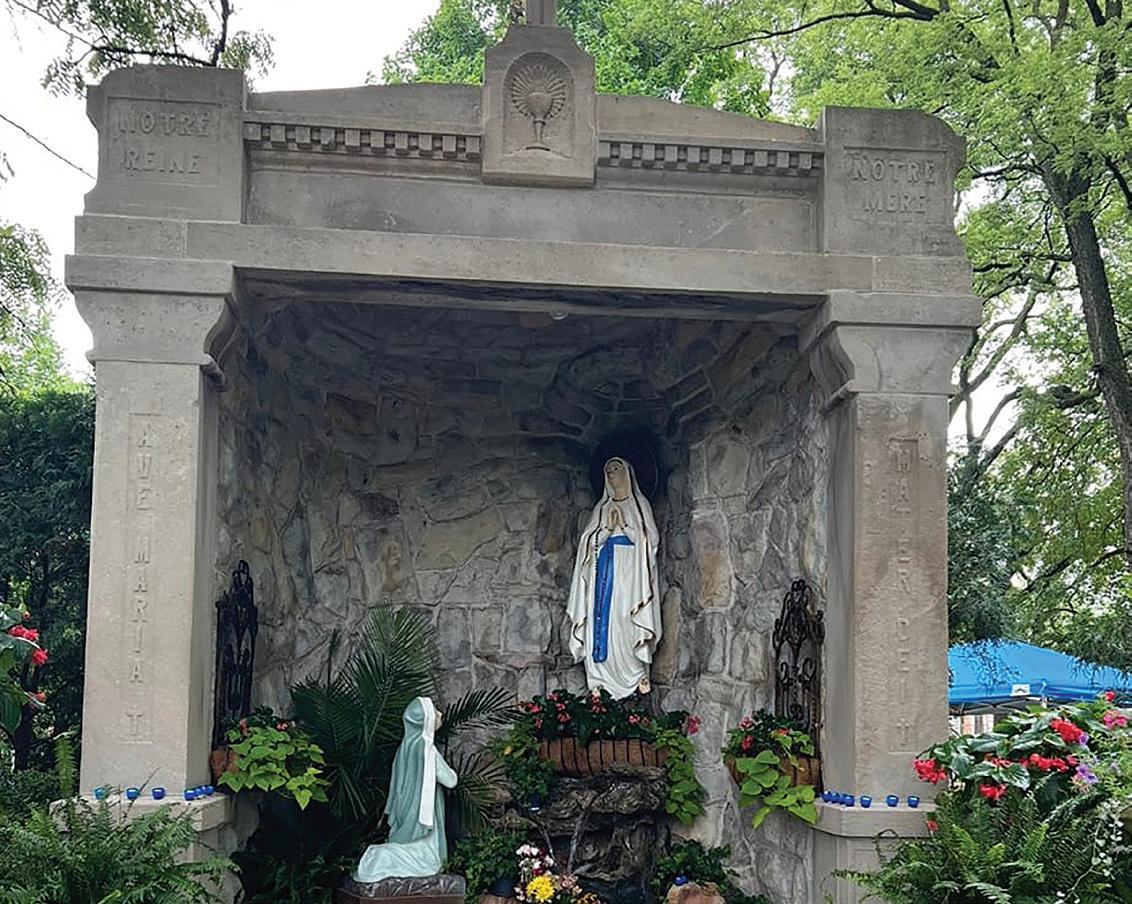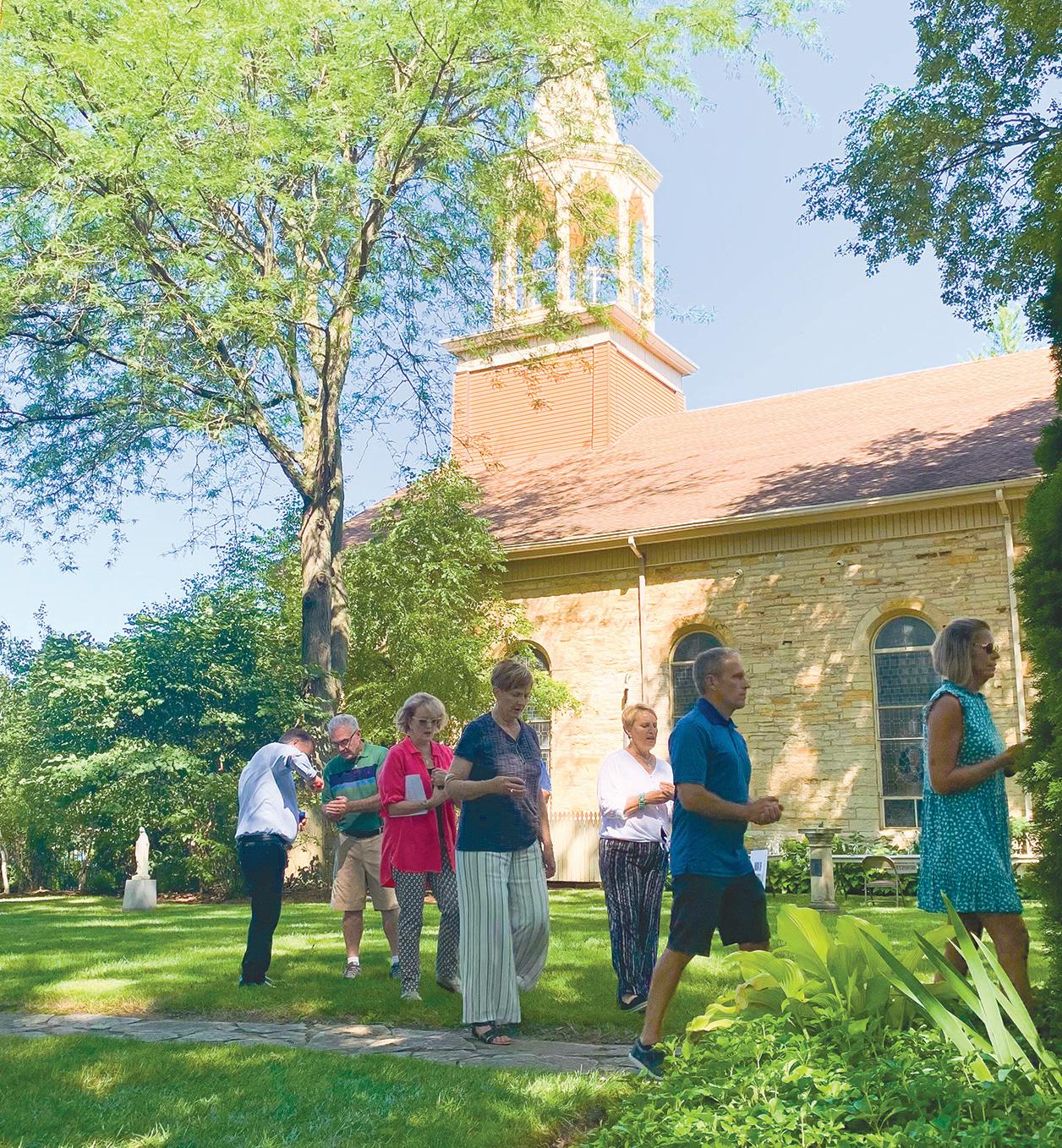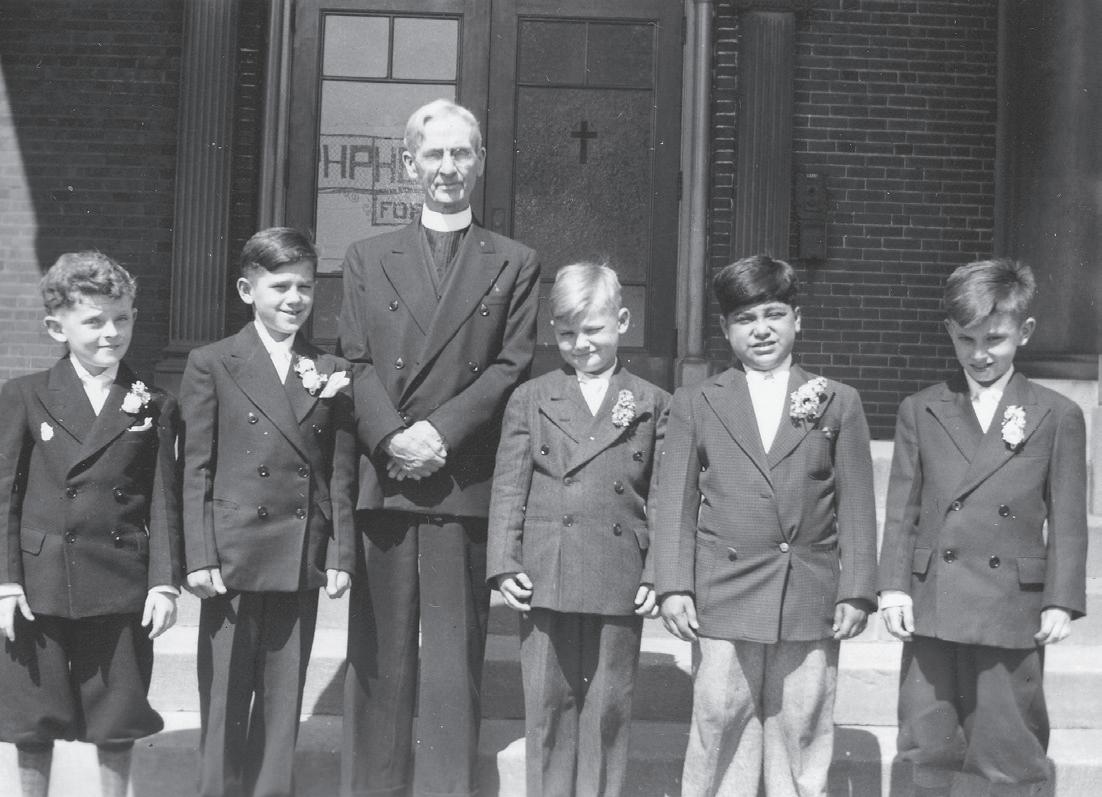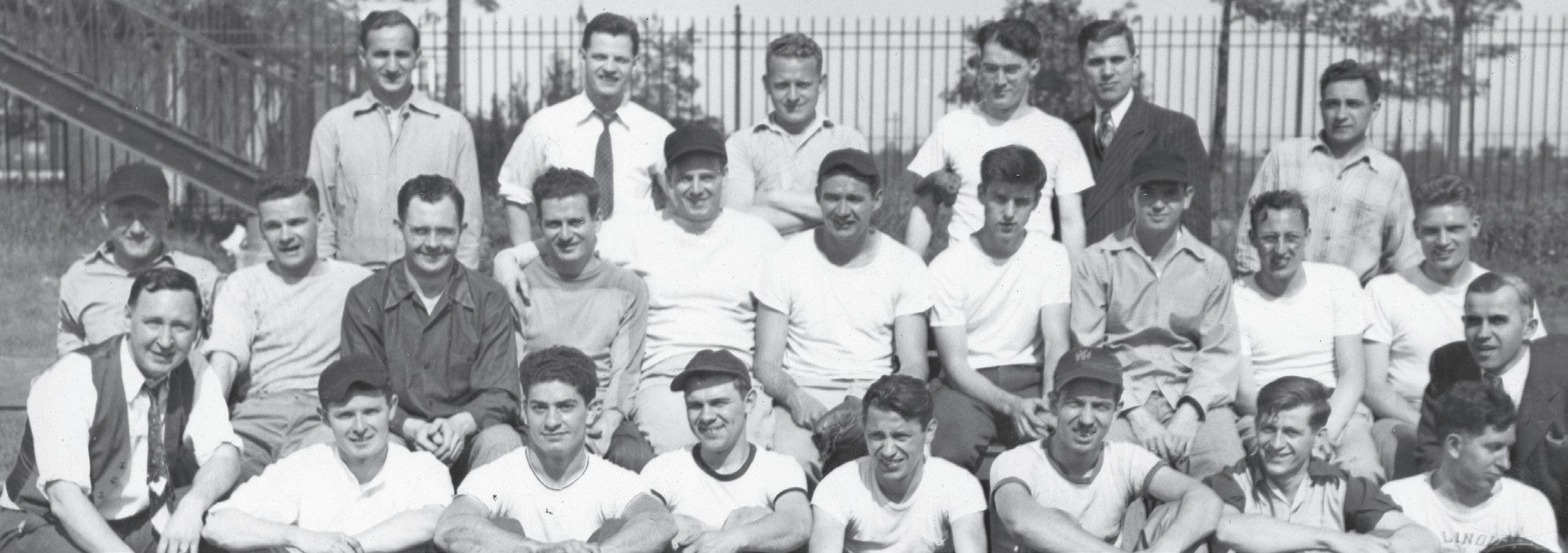
5 minute read
A Milestone Anniversary for Maternity BVM Parish
Maternity of the Blessed Virgin Mary Church is considered the cradle of the Viatorian Community. It was at this Bourbonnais church that Viatorians from Montreal first arrived in the U.S. back in 1865.
Viatorians have led the parish ever since, and this year they are joining with parishioners in celebrating its historic milestone: the church’s 175th anniversary. “In 1865, the seeds of the Viatorian mission were planted in the United States when Fr. Beaudoin and Brothers Bernard and Martell arrived in Bourbonnais,” said Fr. Jason Nesbit, CSV, Pastor. Fr. Nesbit, as well as Fr. Moses Mesh, CSV, Associate Pastor, and their parishioners chose to open the historic year with a celebration concert. It took place in April, on the same day that Fr. Rene Courjault came from Vincennes, Indiana, after being appointed by the Bishop of Chicago to establish a parish church in Bourbonnais. The concert featured selections performed by the parish’s adult choir, praise band, its youth ensemble, its Mustard Seeds Children’s Choir, an area wide festival hand bell choir, and individual soloists. Another highlight of the anniversary year was an outdoor Mass on Aug. 20, which was celebrated by Bishop Ronald Hicks, with Viatorians and diocesan priests concelebrating. They reflected on the parish’s founding in 1847 and 18 years later, at the end of the Civil War, when the first Viatorians arrived from Montreal to serve the parish. Months of preparations led up to the outdoor Mass, including a major project to tuckpoint the church and grotto, as well as repairs throughout the church grounds, and even the restoration of the statues of St. Bernadette and the Blessed Virgin and the 100-yearold grotto itself. “It was a beautiful celebration with the people of God of Maternity BVM Parish, the Congregation of Notre Dame, Servants of the Holy Heart of Mary sisters, Viatorians, diocesan clergy and Bishop Hicks,” said Bishop Christopher Glancy, CSV. Parishioners sat in lawn chairs, as they soaked up all of the beauty of the special Mass, and all set in the outdoor, sacred space. “It was a beautiful day to celebrate our strong faith community at MBVM,” parishioner Phyllis Dwyer said. All the anniversary activities are meant to honor the past and recommit the parish community to its active mission of living out the faith.
Advertisement
“Maternity of the Blessed Virgin Mary is a special place,” Fr. Nesbit added. “In this 175th anniversary, we not only remember the memories of the past, but we renew our commitment of sharing the Good News of Jesus Christ with the community. “We invite all to encounter Christ in a very real way,” he added, “through the celebration of the Sacrament and living out our mission of being Missionary Disciples who radiate the light of love of Christ to all.”

Parishioners carry in candles at the outdoor Mass.
In March 1943, Provincial Richard French had an offer to consider. The Archdiocese of New York needed religious to help staff a school for the deaf in the Bronx. Would the Viatorians be interested?
Even though Viatorians in the U.S. had no real experience with educating deaf students, Fr. French had many reasons to say yes. The Viatorians in Canada ran the well-known Montreal School for the Deaf, established in 1852. Fr. Lucien Pagé, who was director of the school from 1936 to 1947, was a leader in deaf education. The Canadian Viatorians had even established an oblate order for deaf men in 1927. Closer to home, Fr. Thomas McCormick had been chaplain for the Ephphetha School for the Deaf in Chicago since 1932. If the U.S. Viatorians wanted to follow their Canadian brothers into this field of ministry, now was the perfect time. The school the Viatorians would go to, had a long history of its own. St. Joseph School for the Deaf was established by the Society of the Daughters of the Heart of Mary in 1869. It educated grade school and high school aged deaf boys and girls, offering them preparation for the New York State Regents Examinations as well as vocational training in fields such as printing, woodworking, and commercial art. It had a library, classrooms, spaces outfitted for trade instruction, and athletic facilities. Since many students boarded at the school during the week and some stayed over the summer, the school needed men who could manage the older male students inside and outside the classroom. In addition, schools for the deaf across the country were short of teachers because of the Depression and World War II. The fact that the Viatorians had no special training in deaf education was, they were assured, not a problem, and the closeness of the school to Fordham University made it attractive to send Viatorians just out of the novitiate who needed to go to college. The Provincial Council agreed, though Fr. McCormick issued a prophetic warning: “The Sisters who conduct the school in New York are not favorable to Fr. Pagé’s method of teaching, and would not be pleased if we attempted to develop experts along the same lines.” Nevertheless, a group of 11 Viatorians was sent to St. Joseph in the summer of 1943. As Fr. McCormick predicted, almost immediately upon their arrival the Viatorians ran into a larger debate about deaf education that raged for most of the first half of the 20th century. Teachers at St. Joseph were advocates of oral education, which encouraged deaf students to express themselves by speaking and forbade the use of sign language. The Montreal School for the Deaf and Ephphetha School for the Deaf, by contrast, taught using a combination of speech, writing and signing. Fr. French learned of the difficulties in navigating the distinction when the

Fr. Thomas J. McCormick with the Ephphetha School for the Deaf First Communion Class, 1941.











